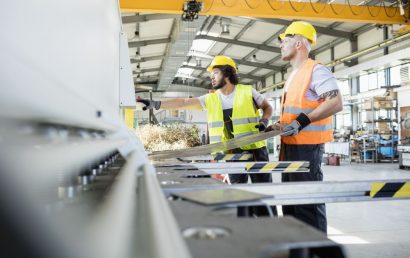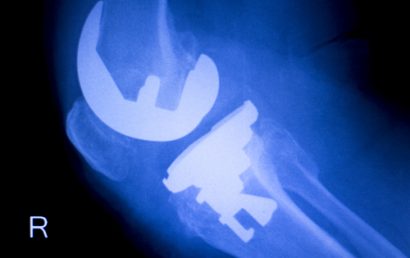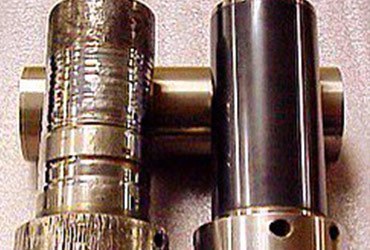Using Ceramic Coatings For Wear Resistance
When equipment breaks down, no money is being made. Downtime is loss-time. Frequently, a quick fix is hurriedly executed. Parts are completely replaced when necessary or rebuilt, patched, reinforced, or whatever it takes to get things back up and running. But if parts which are put back into service have not been treated for wear resistance, the equipment’s service life will be not only unpredictable but questionable at best. And that’s no way to run a business.
Predictability and reliability are key factors in the successful operation of equipment involved in industrial use. In applications that are more aggressive, the structural integrity and lifespan of equipment can be extended through preventative, scheduled maintenance. Centrifuges, pipes, chutes, tanks, housings, hoppers, pumps, mixing vessels, and other metal components must be watched carefully. Even heavy-duty parts can be abraded and damaged by large stones, particulates, sand aggregates, aggressive slurries, and more. That’s why protective coatings are so necessary.
Is Your Equipment Under Attack?
The simple answer here is, yes. Modes of damage that can shorten the life of components can be corrosion, chemical attacks, and mechanical attack – or even a combination of all of those. Let’s take a look at each of these types of assault:
- Chemical attacks – Layer by layer, damage occurs. This is because the surface of the metal is eaten away due to the metal equipment reacting with damaging chemicals which are passing through it. The structural integrity of every part made of metal, subjected to those types of circumstances, gradually decreases as damaged layers are constantly stripped away, and the part’s thickness decreases. Certain coatings can protect against this.
- Corrosion – When iron oxidizes, corrosion occurs leaving metal surfaces covered with a loose and very weak layer of oxide. An entire surface can be affected due to corrosion forming over a large area or cracking and pitting can take place locally at more concentrated corrosion sites. An extremely critical failure can occur in a structure that has, below the surface, active corrosion. This is because oxidation weakens the structure if the corrosion is left untreated. Coating these metal surfaces helps protect against corrosion.
- Mechanical attack – This involves slurries or dry particulates droppings. These droppings travel through pumps, pipes, shoots, and other components. Eventually, even hard alloys can be worn away and abraded by the softest flowing materials. Because of the weakening of the surface metal, thin layers are slowly worn away. This minimizes thickness and eventually the structural integrity of the component. Chemically treating these components can protect against this kind of attack.
Wear Resistant Coatings
It doesn’t take a rocket scientist to understand that the attacks listed above will shut down production eventually and can lead to costly repairs and lost income. Applying chemical coatings to any components or equipment that is subject to the above-listed types of corrosion and wear sieges is the smartest way to avoid them. To increase the life expectancy and equipment efficiency in your industrial setting, epoxy-based, high gloss, ultrasmooth, wear resistant ceramic coatings are recommended. As a bonus, processing time is brief to assure that these parts will be returned to service in an expedited manner, thereby lessening downtime. There are seven distinct categories of wear resistant coatings which have been designed for a multitude of operating environments and industries. They are as follows:
- Impact resistant materials
- Sprayable formulations
- Brush-on formulations
- Fast-set materials
- Ultra-high-temperature formulations
- High-temperature formulations
- Putties with beads
When equipment goes uncoated, unplanned and catastrophic failure can and will result. Equipment that goes unprotected means that your maintenance team is going to be constantly busy replacing parts that are hard to procure, expensive, and extended money loss due to constant downtime. When this is so easily avoidable, why run the risk? Contact A & A coatings today to discuss how they can help you avoid costly downtime and repairs through the use of wear and abrasion resistant coatings.



